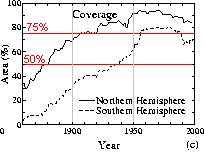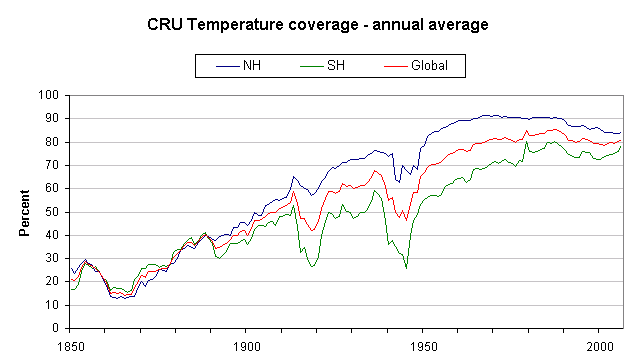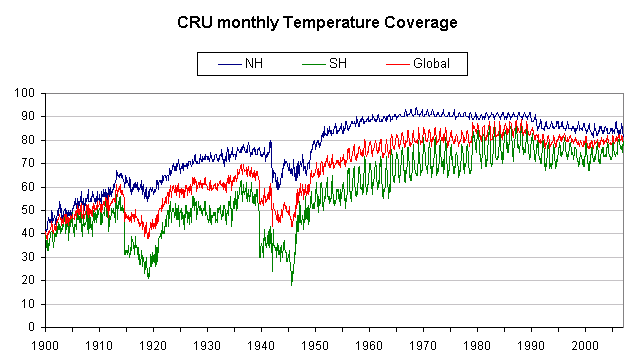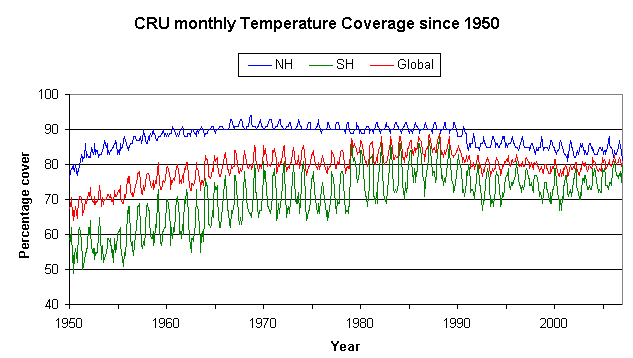Temperature data coverage
Back to main page
Two agencies that provide the information are NASA's Goddard Institute of Space Studies (GISS) and the UK's Climatic Research Unit (CRU).
The coverage of that data (i.e. the percentage of the Earth or its hemispheres where temperatures are measured) has changed over time. Here some graphs of those percentages as they apply to 1850 to 2006 temperature data.
Just remember that 50% means that half the Earth of half a hemisphere (i.e. 25% of the Earth) was NOT measured. Even 80%, which might sound reasonable would still mean that one-fifth of the total area was NOT measured.
Given the range of temperatures that humans like to live in, usually the areas without data will be either very remote or the temperature conditions will be extremes. What value are supposedly average temperatures if the extreme values are missing?

Fig 1 - Temperature Coverage by GISS
The 50% and 75% lines show that GISS had no
temperature data for a large proportion of the Earth prior to 1950..

Fig 2 - Average Annual coverage by the CRU (1850-2006)
Annual average coverage does not consistently exceed 60% until 1950 meaning that data is missing for more than one-third of the Earth's surface. Coverage of the Southern Hemisphere does not exceed 66% until 1965 and even now about 25% of the Southern Hemisphere provides no data. Global coverage is only around 80% which means that the temperatures for 1/5th of the Earth are unknown.

Fig 3 - Monthly coverage by the CRU since 1900
The coverage per month is varying so the CRU obviously cannot be using temperature data from the same set of observation stations. In some years the variation in coverage of the southern hemisphere is close to 20%.

Fig 4 - Monthly coverage by the CRU since 1950
Coverage in both hemispheres varies throughout the year. Only rarely does coverage in the southern hemisphere go above 75% in the middle of the year but that means no data from 25% of the hemisphere, which probably includes some of the coldest regions. Almost 1/5th of the northern hemisphere provides no temperature data, that's 10% of the Earth's surface.